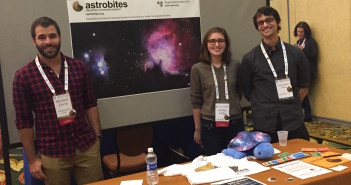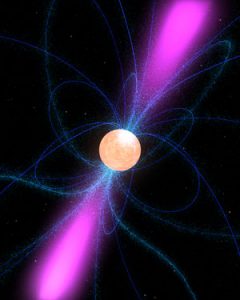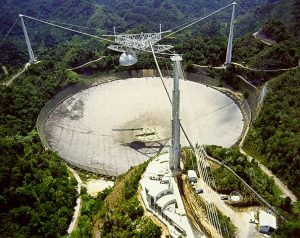Editor’s Note: This week we’re at the 229th AAS Meeting in Grapevine, TX. Along with a team of authors from astrobites.com, I will be writing updates on selected events at the meeting and posting each day. Follow along here or at astrobites.com, or catch our live-tweeted updates from the @astrobites Twitter account. The usual posting schedule for AAS Nova will resume next week.
Plenary Session: The LED Outdoor Lighting Revolution: Opportunities, Threats and Mitigation (by Ashley Villar)
![[@staralexb]](https://aasnova.org/wp-content/uploads/2017/01/C1aiyE7XAAEmqT_.jpg-large-260x195.jpg)
Aubé’s map of sky brightness in 2025. [@staralexb]
(Cégep de Sherbrook) kicked off the day with a keynote address focusing on light pollution and the impacts of LED lighting. Two types of light pollution affect cities and astronomers alike: direct (which is directly pointed towards the sky) and indirect (which is scattered upwards). Aubé pointed out a number of reasons why all citizens should care about these types of light pollution, including reducing our energy consumption, improving quality of life and (of course) darker night skies for astronomy. Using sophisticated numerical models and satellite images, Aubé and his team predicted that by 2025 the majority of the east coast of the USA will not be able to experience unpolluted night skies.
Additionally, the blue color of newer LED lights might have unexpected consequences. For example, blue light scatters easily in the atmosphere (which is why our sky is blue!). The additional scattering will further contribute to the growing light-pollution epidemic compared to redder lights. Additionally, blue lights have been linked to melatonin suppression and certain cancers.
But there is hope! Aubé points out a few ways to help reduce light pollution:
- Installing motion detectors in light fixtures around the city.
- Create sky blockades above city lights (such as trees).
- Changing 4000K or 2700 LEDs with high pressure sodium or PC Amber LEDs.
- Simply reducing the power of light fixtures by 50%.
201 Plenary Session: AAS Prize Presentations: Buchalter Cosmology, Weber, George Van Biesbroeck, Tinsley, LAD Astrophysics Prize, Education (by Nathan Sanders)
AAS President Christine Jones had the special privilege this morning of conferring some of the Society’s most prestigious honors to a set of true luminaries of our field. The short ceremony was dotted with anecdotes about the recipients shared by their nominators — some colorful, and all illuminating as to the character traits that transform a long and productive career into a truly impactful one. While the full list of recipients is available on the AAS website, we’ll discuss just a few of the winners here.
Lynn Cominsky received the AAS Education Prize in recognition of the remarkable series of education and outreach programs she’s built alongside her career researching high-energy phenomena including X-ray bursts and pulsation. Her group has led the high-profile outreach efforts for a long list of NASA missions including Swift, Fermi, and NuSTAR, has founded the NASA Educator Ambassador Program. When her students built and launched a small microsatellite in 2013, Jones noted, Cominsky joined an exclusive subset of humanity that has a satellite control center in their own home.
Receiving the George Van Biesbroeck Prize for extraordinary service to astronomy, Rick Perley was recognized for contributions to both the hardware and wetware of astronomy. While playing a critical role in the design and construction of generations worth of world-leading telescopes at the National Radio Astronomy Observatory (NRAO), where he has worked for 40 years, Perley had at least as much of an impact in three decades of operating the semiannual synthesis imaging school that has taught legions of radio astronomers how to use and do science with NRAO’s instruments. Jones noted that this scientist education model has been replicated around the world.
Andrew Gould (Ohio State University) is this year’s recipient of the Beatrice M. Tinsley Prize, which rewards “an outstanding research contribution to astronomy or astrophysics, of an exceptionally creative or innovative character.” Adding to a distinguished career exploring galactic structure, dark matter, and other topics, Gould pioneered the use of microlensing as a technique to detect and characterize exoplanets. In nominating him, his colleagues described Gould as a “renaissance astronomer.”
Thesis Talk 204.03D: Chris Faesi, Bridging the Gap from Galactic to Extragalactic (by Nathan Sanders)
Much of our understanding of how stars form in the universe comes from studies of our own Milky Way galaxy, where we can study stellar nurseries (giant molecular clouds, or GMCs) with the benefit of a constituent’s perspective. But the launch of new, more powerful interferometers like ALMA make it possible to extend these studies, and in some ways even top them, with high resolution studies of distant galaxies.
In a talk summarizing a PhD’s worth of investigations into star formation throughout our Local Group, Astrobites author Chris Faesi also shared new results from a massive campaign of CO observations with ALMA that use the nearby galaxy NGC 300 as a testbed for understanding how star formation operates across scales from individual GMCs to different types of galaxies, within and beyond the Milky Way.
While it’s been long known that galaxies with more insterstellar gas form stars at a faster rate (see the Kennicutt-Schmidt relation), earlier studies by Faesi and his advisor Charlie Lada established that individual GMCs also show a mass–star formation relation and, moreover, that these two relations seem to be part of the same continuum of star-formation processes across drastically different scales.
The resolving power of ALMA allows us to fill in the gap between these two scales, to check whether this continuum persists between Milky Way GMCs and populations of entire galaxies. Pointing ALMA at NGC 300 offers the opportunity to measure the physical properties of a much larger sample of individual GMCs with uniform sensitivity than we could collect even within the Milky Way.
Importantly, Chris’ ALMA results show that Larson’s longstanding laws for star formation in the Milky Way also extend to the much smaller spiral, NGC 300. As these empirical, observed relations are key pieces of evidence in our theory of star formation, confirming that they apply to other types of spiral galaxies points to a universal process for star formation in these galaxies.
Press Conference: Galaxies & Black Holes Therein (by Susanna Kohler)
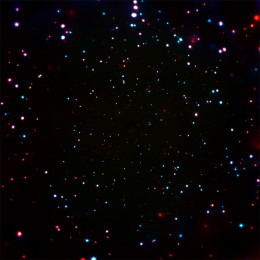
A new Chandra deep-field image containing over 2,000 black holes. [X-ray: NASA/CXC/Penn State/B.Luo et al.]
This morning’s press conference opened with a discussion by
Niel Brandt (Pennsylvania State University) about an stunning new image released from the Chandra X-ray observatory. The image, which is officially the deepest X-ray image ever made, was built by staring at a patch of sky about 60% the size of the full moon in the sky and collecting over 7 million seconds (that’s about 11.5 solid weeks!) of Chandra observations of this region. The central region of the resulting image contains the highest concentration of black holes ever seen, which can reveal information about the growth of black holes over billions of years, beginning soon after the Big Bang. You can read more these Chandra observations in the summary of Brandt’s plenary talk below, or check out the team’s press release
here.
![A labeled version of the cover image, showing a supermassive black hole's jet being swept up in the collision of two galaxy clusters. [Credit: X-ray: NASA/CXC/SAO/R. van Weeren et al; Optical: NAOJ/Subaru; Radio: NCRA/TIFR/GMRT]](https://aasnova.org/wp-content/uploads/2017/01/a3411_label-260x178.jpg)
A labeled version of the cover image, showing a supermassive black hole’s jet being swept up in the collision of two galaxy clusters. [Credit: X-ray: NASA/CXC/SAO/R. van Weeren et al; Optical: NAOJ/Subaru; Radio: NCRA/TIFR/GMRT]
Next up,
Reinout Van Weeren (Harvard-Smithsonian Center for Astrophysics) presented yet another new image using Chandra data — this one a dynamic composite of optical, radio and X-ray radiation revealing the dramatic collision of two galaxy clusters. Van Weeren explained that the new Chandra observations link together energetic eruptions fueled by supermassive black holes and the collision between two galaxy clusters for the first time. This “cosmic double whammy” has generated a colossal shock wave that can accelerate particles to tremendous speeds. Read more in the press release
here.
Ian Steer (NASA/IPAC Extragalactic Database) concluded the session with a discussion of what’s new in the NASA/IPAC Extragalactic Database (NED), an online repository containing information on over 100 million galaxies. Steer introduced us to NED-D, a special catalog that currently contains over 166,000 redshift-independent distance measurements for over 77,000 galaxies. This growing catalog will allow astronomers to make increasingly precise estimates of distances to galaxies, the scale size of the universe, the expansion rate for the universe, and even the rate of change of the universe’s expansion rate. More information can be found here.
Plenary Session: What We Don’t Know About the Beginning of the Universe (by Joanna Bridge)
In his plenary session, Dr. Sean Carroll discussed many theories for how the universe began. What we do know about the beginning of the universe is that, as Carroll notes, “Something bang-like happened.” The universe came to be in a hot, dense state, expanding rapidly but decelerating in its expansion. Initially, the early universe had extremely low entropy. We know this because the early universe was isotropic and homogeneous, while high entropy states are rather lumpy. The curious thing about this low initial entropy is that it requires enormous “fine-tuning”. In other words, a universe that begins with low entropy is very unusual. If we add the theory of inflation of the universe on top of the Big Bang, we get a universe that begins with even lower entropy than required just by the Big Bang itself. Carroll emphasized that any theory that attempts to explain the beginning of the universe must not only account for the low entropy state of the universe but also explain why this was the case in the early universe.
Carroll went on to describe ways the universe came to be. Either there was a beginning, or else something the mimicked a beginning but was not. He described several cosmologies that would fit this bill. Bouncing cosmologies, where the universe experiences a big crunch before re-expanding, still has an entropy problem. If entropy grows monotonically through the crunch and into the subsequent expansion, then the universe is not symmetric about the bounce — talk about requiring fine-tuning! This explanation requires infinite fine-tuning.
Cyclic cosmologies are those in which the bounce occurs infinitely over and over, continually expanding then contracting. Hibernating cosmologies describe a universe that stays in a quiescent state for a long time before exploding into a Big Bang. But again, these cosmologies result in an entropy catastrophe! Any theory of the Big Bang needs to have both compatibility with low entropy early on as well as an explanation for why.
Carroll instead prefers reproducing cosmologies. Reproducing cosmologies are those in which a “parent” universe exists that is both quiescent and high entropy. Through some mechanism, it can give birth to new offspring universes, with initially low entropy. This would involve some kind of spacetime quantum tunneling to form the disconnected baby universes. These small universes would be much more likely to start off with low entropy, thereby eliminating the initial low entropy problem.
Of course, all of these theories are posited assuming a classical general relativistic universe. However, we cannot forget about quantum mechanics! Carroll described how quantum mechanics must be incorporated into these cosmologies, perhaps creating a quantum state that has infinite room to grow and change. A quantum theory for the universe must be determined to correctly describe the universe in which we currently exist.
Carroll closed with a letter he received from a 10 year old skeptic of his work who wasn’t too impressed with Carroll’s theorizing about how the universe might be put together. The P.S., in case you can’t read it, says, “Some people just have too much time.”
Press Conference: Latest Results from the Sloan Digital Sky Survey (SDSS) (by Meredith Rawls)
Links to SDSS press releases: http://www.sdss.org/press-releases/
The Sloan Digital Sky Survey (SDSS) continues to be a remarkably successful mission. Most recently, the Apache Point Observatory Galactic Evolution Experiment (APOGEE) portion of SDSS has mapped the chemical composition of our Milky Way galaxy and discovered that the elements of life are most abundant near the center.
![Sten Hasselquist and the elements of life as measured throughout the Milky Way by @APOGEEsurvey #aas229 [@merrdiff]](https://aasnova.org/wp-content/uploads/2017/01/C1bzRMWWIAAJSuk-260x195.jpg)
Sten Hasselquist and the elements of life as measured throughout the Milky Way by @APOGEEsurvey #aas229 [@merrdiff]
(University of Portsmouth) began the press conference by introducing SDSS and describing what is next for APOGEE. It has measured spectra for bright red giants throughout the northern sky, and now a twin of the original instrument is on its way via boat to APOGEE-2 South in Chile. It will arrive later this month and begin mapping the parts of the galaxy only visible from the southern hemisphere from Las Campanas Observatory.
Jon Holtzman (New Mexico State University) then discussed how APOGEE uses infrared spectroscopy to study stellar populations and the history of our galaxy. Because elements form in stars with different timescales, a snapshot of their compositions today can tell us a lot about how the population came to be. Specifically, the key elements of life are “CHNOPS” — Carbon, Hydrogen, Nitrogen, Oxygen, Phosphorus, and Sulfur — and their abundances vary in different parts of the Milky Way. In fact, as
Sten Hasselquist (New Mexico State University) reported, all these elements are more abundant toward the center of the galaxy and less abundant farther out. He found that the elements in the inner galaxy have had billions more years to potentially develop life, saying “the longer timescale is tantalizing.”
![Awesome planet composition simulations presented by @johannateske #aas229 [@merrdiff]](https://aasnova.org/wp-content/uploads/2017/01/C1bzbWlWEAAjlV4-260x195.jpg)
Awesome planet composition simulations presented by @johannateske #aas229 [@merrdiff]
Now that APOGEE has revealed what stars are made of,
Johanna Teske (Carnegie DTM) set out to simulate the composition of exoplanets around those kinds of stars. She measures the “Earth-likeness” of these planets by simulating the process of differentiation given a set of available ingredients. If we know what a planet is made of, we can infer whether it has the potential to have an atmosphere, magnetic field, or even plate tectonics.
To close out the session, Kelly Holley-Bockelmann (Vanderbilt) presented important work being done by the entire SDSS community to improve diversity. A census of the collaboration found that it largely mirrored the astronomical community and was disproportionately white. In one effort to remedy this, the SDSS FAST (Faculty And Student Team) initiative began. The program recruits students from underrepresented groups at all levels to work with faculty and postdoc mentors on a research project funded by SDSS. Kelly reported that 57% of the FAST students are women, 66% are underrepresented minorities, and at least 25% are first generation college students. The program is going strong in its second year with six teams, and many FAST students are presenting research results at this very conference.
Dannie Heineman Prize for Astrophysics: Increasing Accuracy and Increasing Tension in Ho (by Ashley Villar)
Dr. Wendy Freedman won this year’s Dannie Heineman Prize, a joint prize between AAS and the American Institute of Physics. Her keynote focused on the history of the Hubble constant and its measurement. She began her talk focusing on her personal history, pointing out that as a young researcher she was discouraged from studying the Hubble constant. At the time, some senior scientists believed that the Hubble constant was well understood, and had a value of 50 km/s/Mpc. Luckily, that did not stop Freedman from her now lifelong pursuit to measure this fundamental parameter.
Over the last few decades, the uncertainty on the Hubble constant has decreased from a factor of two to about 10%. However, today there is an unexplainable 3.4-sigma discrepancy between the Hubble constant measured using traditional rungs of the distance ladder and that measured using the cosmic microwave background. Freedman pointed out that these discrepancies might be yet uncovered systematic errors or something more exotic, like a new relativistic species or a modification of gravity.
Freedman hopes that by improving measurements of the Hubble constant along the distance ladder, we can uncover the source of this discrepancy. Especially important will be the future Gaia data releases, which will provide precise astrometry to measure cepheid distances. Additionally, the Carnegie Chicago Hubble Project will continue to measure the tips of the red giant branch in more distant galaxies as another rung of the distance ladder.
HEAD Bruno Rossi Prize: A Good Hard Look at Growing Supermassive Black Holes in the Distant Universe (by Michael Zevin)
In the final plenary of the day, Niel Brandt (Penn State) took the stage after being awarded this year’s Bruno Rossi Prize for his ongoing work in X-ray astronomy. Brandt focused on active galactic nuclei (AGN) and the surveys of these objects from the Chandra X-ray observatory. High-energy emission from AGN is believed to be produced in the coronal structure of the accretion disk around supermassive black holes in distant galaxies. Though this emission originates from the galactic centers obscured by giant swaths of absorbing dust, the penetrating power of X-rays reveal these extreme objects just like an X-ray machine reveals the bones within your body.
![Neil Brandt shows us some of the many, many of the X-ray sources uncovered by Chandra Deep Field South [ @astrobites]](https://aasnova.org/wp-content/uploads/2017/01/C1cUqc1XAAQ9E4V-260x195.jpg)
Neil Brandt shows us some of the many, many of the X-ray sources uncovered by Chandra Deep Field South [ @astrobites]
Brandt highlighted discoveries from the Chandra Deep Field South (CDF-S) survey, which provided one of the deepest views of the X-ray sky. This survey found over 1000 X-ray sources, most of which were AGN, in a region of the sky only about ⅔ the size of the full moon. Furthermore, it stared at this region for about 7 million seconds (~81 days), allowing analysis of AGN variability and further exposing the faintest of faint sources. In fact, the faintest signals picked up by this survey were detected from only 1 photon count on the CCD every 10 days — a testament the the technological sophistication of the telescope’s camera. From the number of AGN discovered in this X-ray survey, the predicted number of AGN across the entire sky could exceed 1 billion!
This zoo of spectrally-analyzed AGN observed for extended durations has helped to solidify how these distant beasts evolve with their host galaxy, and how they relate to galactic properties like the star formation rate. Brandt concluded with a look forward to the great X-ray observatories that await astronomers in the future, such as eROSITA and Athena.
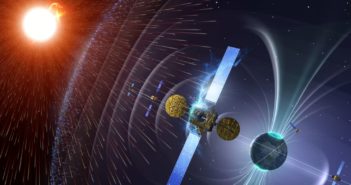

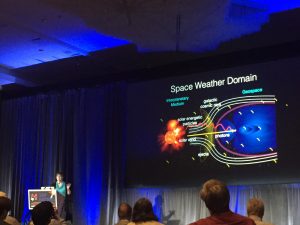

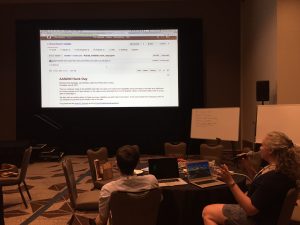

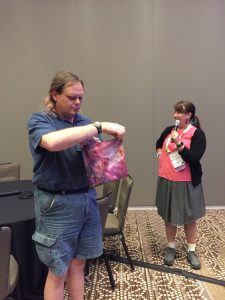
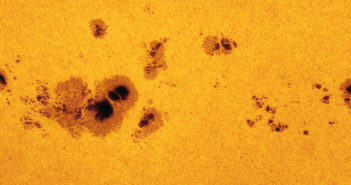

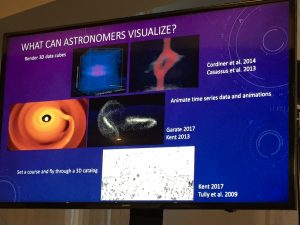

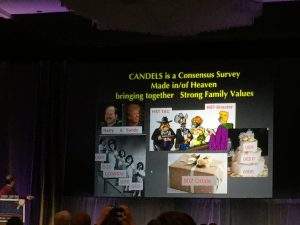



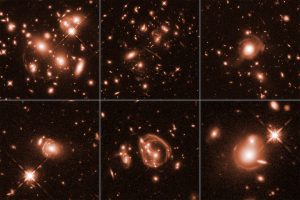
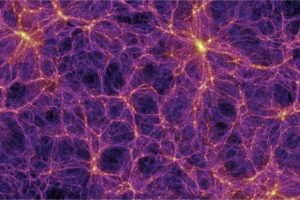
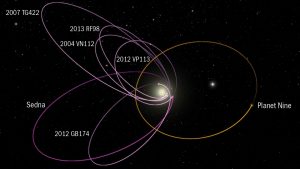


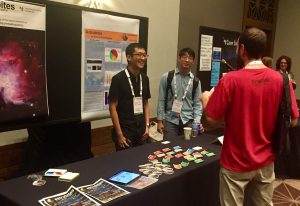
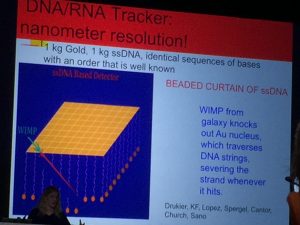
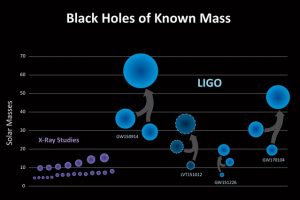

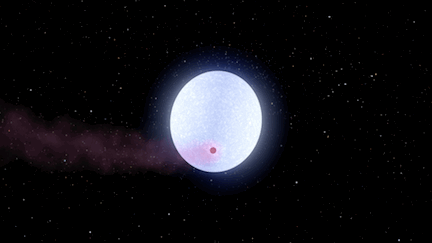
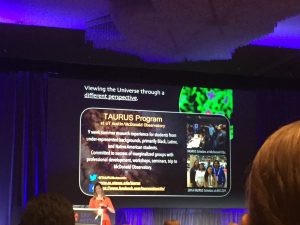
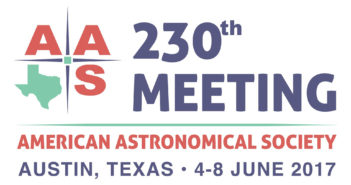
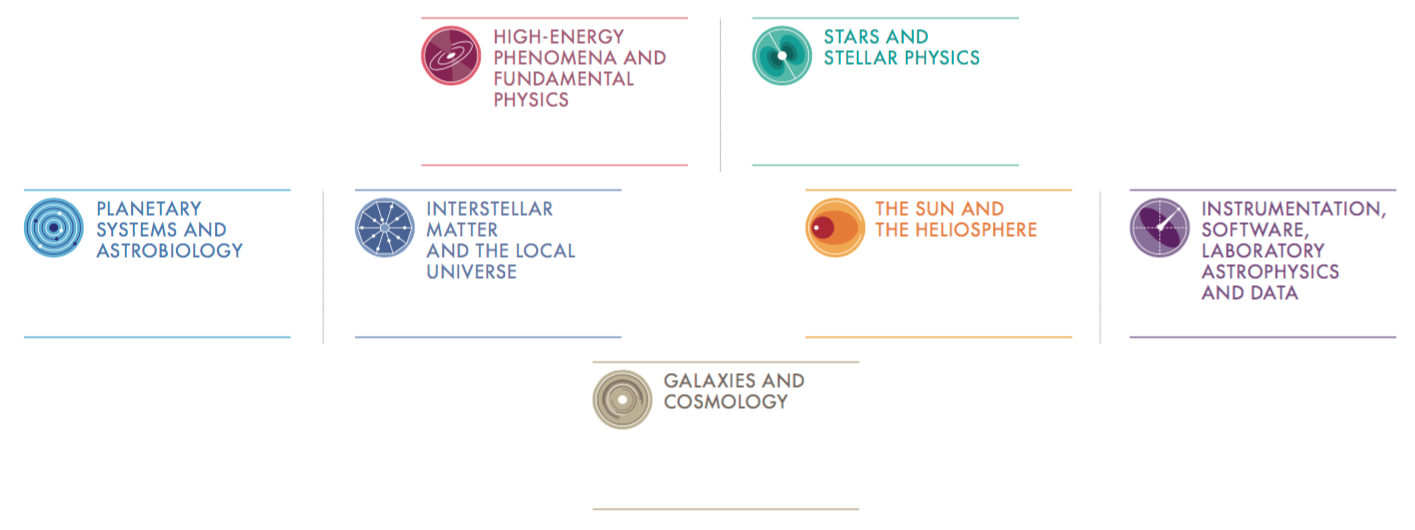
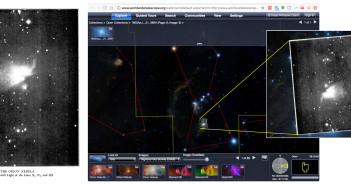
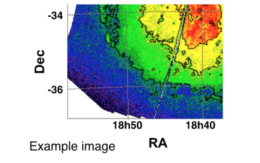
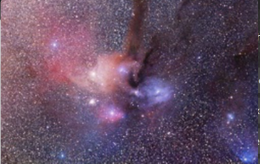

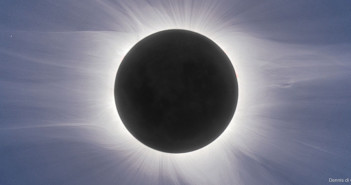
![The authors' model of what causes a moving shadow in TW Hydrae's disk. [NASA, ESA, and A. Feild (STScI)]](https://astrobites.org/wp-content/uploads/2017/01/diskshadow-300x189.jpg)


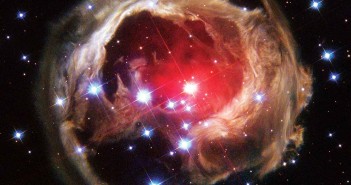
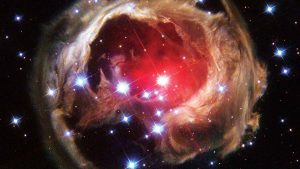
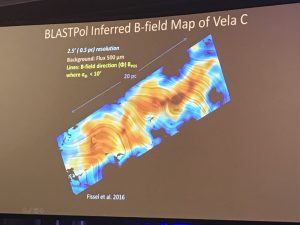
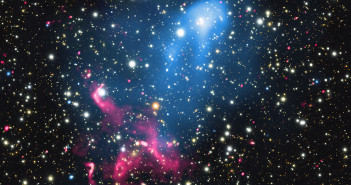
![[@staralexb]](https://aasnova.org/wp-content/uploads/2017/01/C1aiyE7XAAEmqT_.jpg-large-260x195.jpg)

![A labeled version of the cover image, showing a supermassive black hole's jet being swept up in the collision of two galaxy clusters. [Credit: X-ray: NASA/CXC/SAO/R. van Weeren et al; Optical: NAOJ/Subaru; Radio: NCRA/TIFR/GMRT]](https://aasnova.org/wp-content/uploads/2017/01/a3411_label-260x178.jpg)
![[@astroprofhoff]](https://aasnova.org/wp-content/uploads/2017/01/C1bU-s5WgAA2rH0-702x527.jpg)
![Sten Hasselquist and the elements of life as measured throughout the Milky Way by @APOGEEsurvey #aas229 [@merrdiff]](https://aasnova.org/wp-content/uploads/2017/01/C1bzRMWWIAAJSuk-260x195.jpg)
![Awesome planet composition simulations presented by @johannateske #aas229 [@merrdiff]](https://aasnova.org/wp-content/uploads/2017/01/C1bzbWlWEAAjlV4-260x195.jpg)
![Neil Brandt shows us some of the many, many of the X-ray sources uncovered by Chandra Deep Field South [ @astrobites]](https://aasnova.org/wp-content/uploads/2017/01/C1cUqc1XAAQ9E4V-260x195.jpg)
